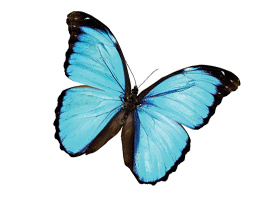 Winter 2011
Winter 2011|
“We found that the capacity for wonder isn’t age specific—it’s something we all possess and take joy in exercising.”
Photo: Josh Franzos |
How many museum employees does it take to change a light bulb? Or, more precisely, how many museum employees does it take to shine a new light on all the work that goes on behind the scenes at our great research institution? The answer is: all of them! A year and a half ago, with support from the PNC Foundation, we launched the Center for Lifelong Science Learning, intended to foster teams of scientists and educators working together to make our research and collections more accessible and relevant to museum visitors of all ages. Now, one of the center’s first projects is open to the public. M is for Museum debuted in the R.P. Simmons Family Gallery at Carnegie Museum of Natural History on October 15. The questions have been pouring in ever since. “What are those things?” asks a small visitor fascinated by jars of perfectly preserved reptiles and amphibians. Comment cards posted by visitors on walls throughout the exhibition ask: “What kind of birds laid those tiny eggs?” and “What do you do with all of those bugs?” We couldn’t be more delighted, because questioning is exactly the point of M is for Museum. You can read about M is for Museum in this issue of CARNEGIE magazine; better yet, bring the curious youngsters in your life to see the exhibition. But plan also on being intrigued yourself. We set out to develop an exhibition that would engage young learners with science, particularly with the research that our museum conducts every day. To ensure that its experiences and language would be relevant to kids, we tested nearly every display with our target audience, and with the adults who accompanied them. We found that the capacity for wonder isn’t age specific—it’s something we all possess and take joy in exercising.
M is for Museum gives kids and adults lots of reasons to slow down, to investigate what is in front of them, and to bring their own experiences and stories to the specimens on display, in addition to the stories and explanations provided by the museum. The design for M is for Museum represents a paradigm shift for the Museum of Natural History. Our primary goal is to engage visitors with the contemporary research mission of the museum. That is why this first center exhibition presents collections, expertise, and research from all nine of the museum’s scientific divisions. In total, 23 curators and collections managers participated in creating M is for Museum, along with museum educators, designers, fabricators, and others. Whether their work focuses on evolution, biodiversity, or world cultures, our researchers collaborate with educators to ensure that the scientific work of the museum becomes the foundation for a robust array of educational offerings that enhance experiences in our galleries, expand our offerings to schools, and deepen our collaborations with area universities. M is for Museum will be improved and upgraded throughout its life as we gather additional information about visitor experiences through summative evaluation, comment cards, and our daily interactions with visitors. The most successful displays ultimately will be integrated into the permanent exhibition galleries. Audience input also will inform future public programs. As you learn at and about the museum, we learn, too. Through M is for Museum, and other projects of our new centers, we’re shining a brighter spotlight on the valuable research and collections that are the heart of our museum, and that’s how we spell success.
Samuel M. Taylor, Director
|
The ABCs of Discovery · Photographing My People · International Negotiations · The Art of Reading a Face · NewsWorthy · Face Time: Linda Ortenzo · About Town: Game On · Artistic License: Contemporary Craft · The Big Picture
 |
Copyright © 2017 CARNEGIE Magazine. All rights reserved. |



